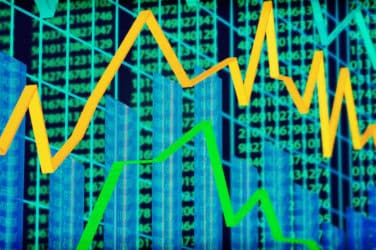
The Teachers’ Retirement Board authorized a package of investment actions to enhance its efforts to achieve a net zero investment portfolio, address climate change and support the retirement security of California’s public teachers.
The board, which governs the California State Teachers’ Retirement System (CalSTRS), took a significant step in advancing its pledge from last summer to achieve a net zero emissions portfolio by 2050 or sooner. Today the board approved implementing a “total fund plan,” recognizing that climate change presents material risks to all sectors of the global economy and all asset classes.
CalSTRS sets science-based emissions goal for 2030 and commits to additional net zero actions. https://t.co/WPIzZS4wt0 pic.twitter.com/3lfVUUWc8E
— CalSTRS (@CalSTRS) August 31, 2022
The board set four initial measures for integrating the net zero strategy across the portfolio, with a specific focus on emissions reductions:
- Interim science-based goal. Reduce greenhouse gas emissions across the investment portfolio by 50% by 2030, consistent with the latest findings of the United Nations’ Intergovernmental Panel on Climate Change.
- Systematic decision-making process. Adopt processes to incorporate greenhouse gas emissions into investment decisions as part of traditional risk-and-return analyses and their potential impacts on the CalSTRS Funding Plan.
- Reduced emissions. Target a 20% allocation of the Public Equity portfolio to a low-carbon index to significantly reduce portfolio emissions while managing active risk.
- Integration of climate scenarios. Incorporate future climate-related scenarios into CalSTRS’ asset-liability modeling framework to help guide CalSTRS’ investment allocations.
These actions reflect increasing global momentum toward achieving a net zero economy. CalSTRS will review its net zero goals and strategy annually to adjust for the latest available data, market fluctuations and related scientific advancements.
“CalSTRS’ net zero pledge is rooted in its century-long promise to deliver a secure retirement for California’s hard-working educators and their families,” said Board Chair Harry Keiley. “Taking these interim actions to reduce emissions in our portfolio is a profound step forward and underscores our commitment to considering the impacts of climate change fully and systematically as we manage our fund on every level.”
The board adopted an investment belief in January 2020 that investment risks associated with climate change materially impact the value of CalSTRS’ investment portfolio, and CalSTRS must consider actions to mitigate risk and identify investment-related opportunities. Since 2004, CalSTRS has invested in climate-oriented solutions and integrated climate risk considerations into its investment and stewardship activities.
“We need to escalate our work in reducing emissions, expand our investments in low-carbon solutions and use our influence to accelerate the global economy’s transition,” said Board Vice Chair Sharon Hendricks. “CalSTRS is taking bold measures to mitigate the risk climate change poses to our fund, while prioritizing our plan to reach full funding by 2046 and fulfilling our promise to California’s teachers.”
In its independent analysis of CalSTRS’ recommendations, the board’s investment consultant, Meketa Investments Group, said: “We believe the recommendations represent a well-structured approach that embodies a best-fit integration of a net zero strategy into CalSTRS’ overall investments. …Because staff also recommends regular annual reviews, should market realities and/or science-based targets shift, CalSTRS will be well-positioned to consider potential adjustments to the implementation of its net zero pledge that might be made to best support the retirement security of CalSTRS’ beneficiaries.”
CalSTRS’ key climate-investment efforts
CalSTRS’ climate change-related investment activities have accelerated in the past six years and include many milestones:
2016
- Investing in a low-carbon public equities index with significantly lower exposure to carbon emissions.
2017
- Implementing thermal coal exclusions in the CalSTRS Investment Portfolio.
2019
- Adopting the Low-Carbon Transition Work Plan.
2020
- Adopting a low-carbon investment belief.
- Supporting the development of the California Climate Investment Framework with the California Department of Finance.
2021
- Committing to a net zero investment portfolio by 2050 or sooner.
- Funding two low-carbon transition readiness exchange-traded funds (ETFs).
- Creating a new private asset class portfolio to expand investments in climate solutions.
- Electing three alternate directors to the ExxonMobil board.
2022
- Focusing on measuring emissions and strengthening climate-related disclosures.
- Approving a package of investment measures to reduce emissions.
- Integrating the net zero strategy across the investment portfolio.
For more information on CalSTRS’ progress toward a net zero portfolio, visit the Path to net zero webpage.
About CalSTRS
The California State Teachers’ Retirement System provides a secure retirement to more than 980,000 members and beneficiaries whose CalSTRS-covered service is not eligible for Social Security participation. On average, members who retired in 2020–21 had 25 years of service and a monthly benefit of $4,813. Established in 1913, CalSTRS is the largest educator-only pension fund in the world with $311.7 billion in assets under management as of July 31, 2022. CalSTRS demonstrates its strong commitment to long-term corporate sustainability principles in its annual Sustainability Report.
Source: CalSTRS





